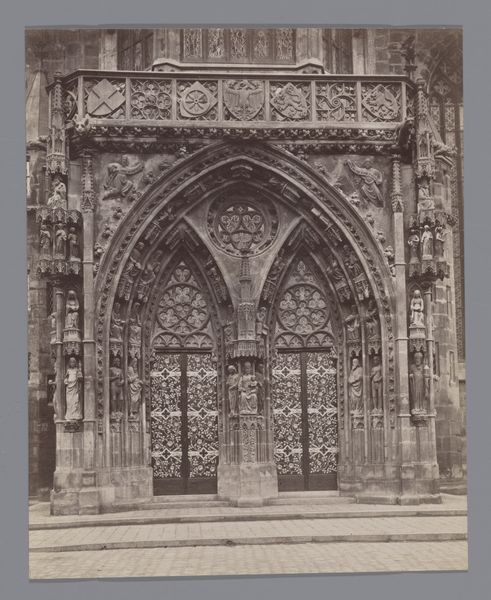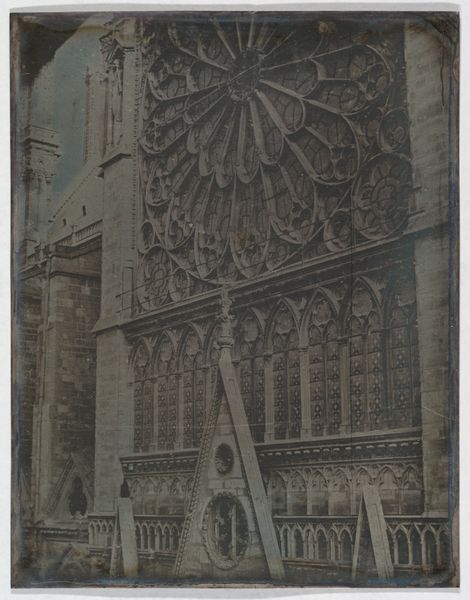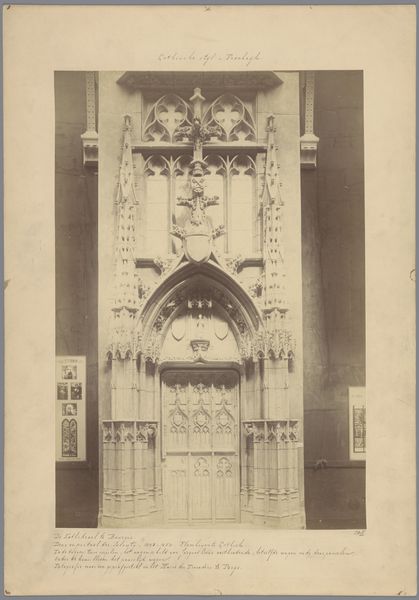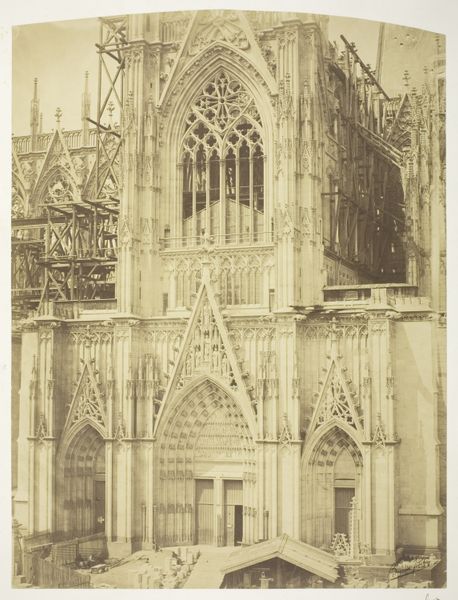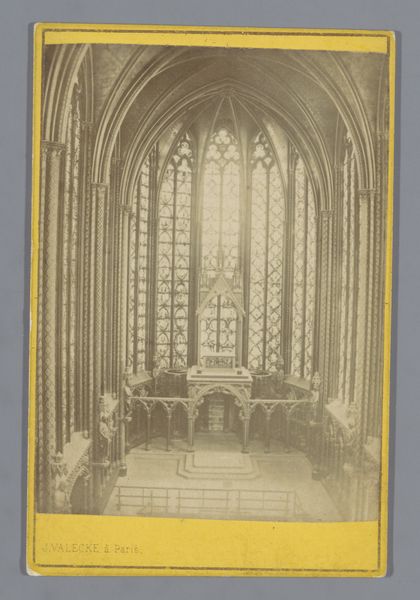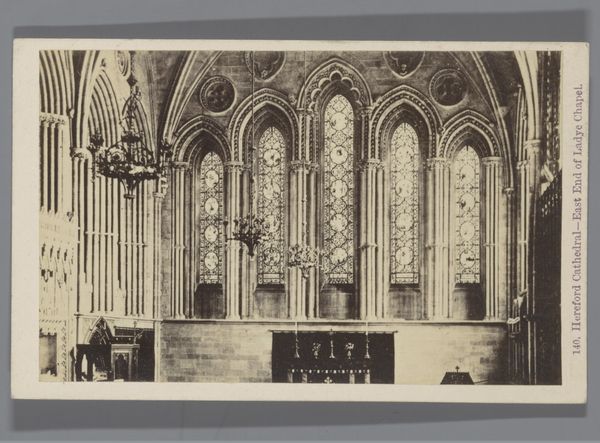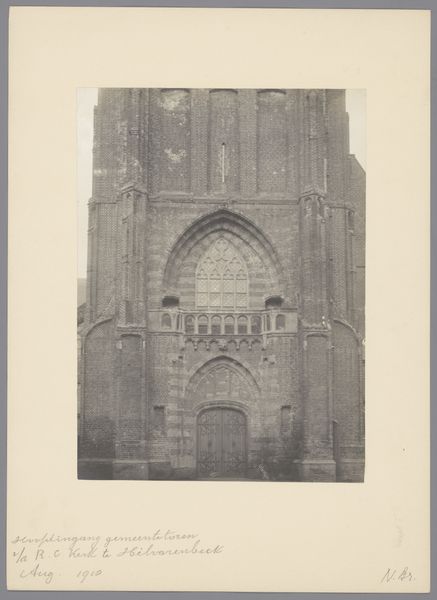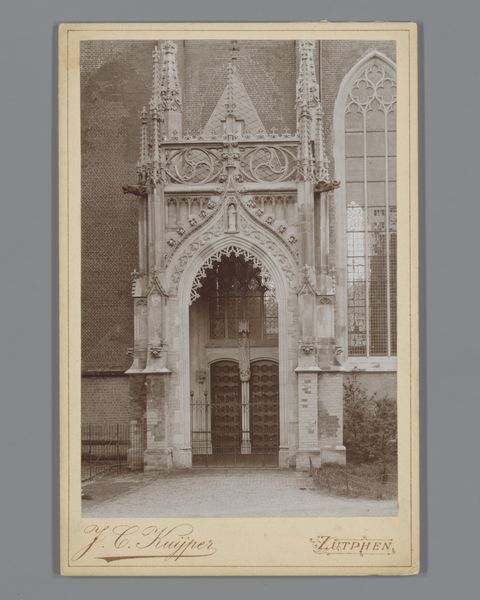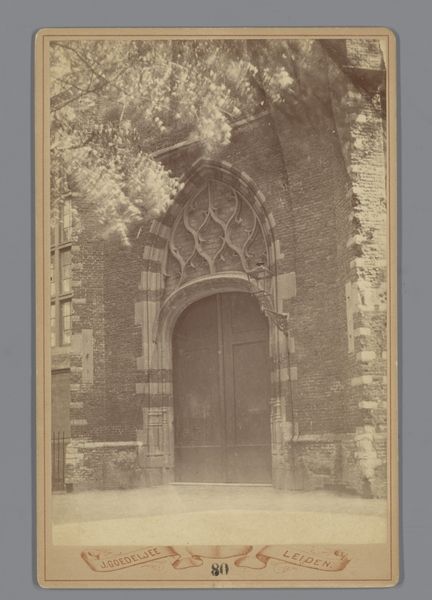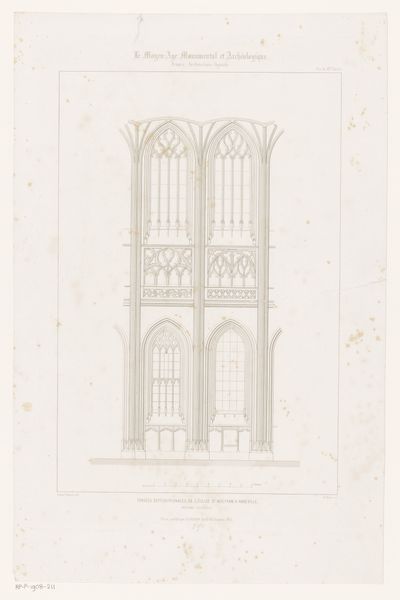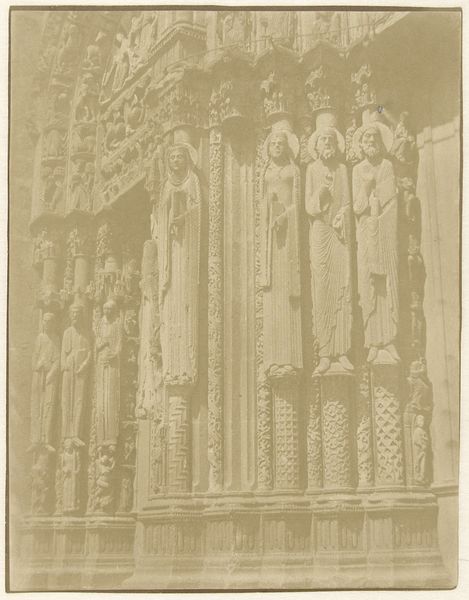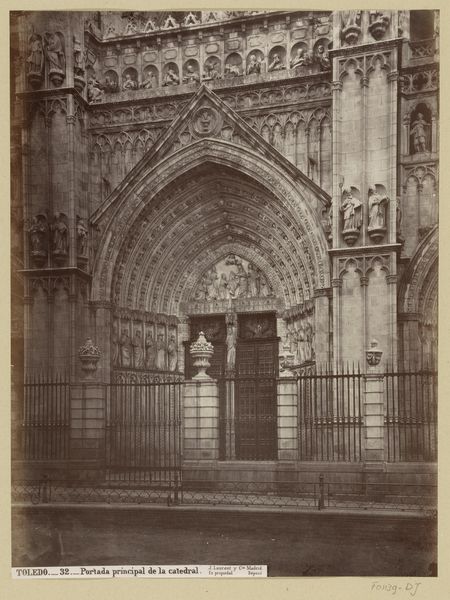
Dimensions: height 250 mm, width 200 mm
Copyright: Rijks Museum: Open Domain
Curator: Here we have Giacomo Brogi’s photographic study, “Venster van de kathedraal van Milaan,” taken sometime between 1890 and 1920. The image presents a detailed view of a window from the Milan Cathedral. Editor: Striking. There’s a stark monumentality to it. The subdued tones create a certain austere beauty, almost ghostly, drawing me to the intricacies of the window’s design. Curator: Indeed. Let's consider the material conditions involved. Brogi would have used large format cameras that demanded considerable physical labor for both their operation and the transportation of equipment. The finished print itself speaks of craft: a physical object born from chemical processes. These vintage photographs, especially those capturing architecture, give us a tangible link to past labor practices and industrial methods. Editor: Yes, but what’s fascinating is the geometry itself. The way the light filters through the intricate stonework and leads your eye upward. The visual rhythm established by the repetition of the gothic arches—a semiotic code representing spiritual aspiration. Curator: Gothic architecture served a very specific socio-political purpose: demonstrating the Church's dominance via massive construction projects funded by the populace. Consider the conditions of the stonemasons, glaziers and laborers responsible for such ornate structures! Their stories are etched, quite literally, into every stone. Editor: While I concede your point about labor, look at the rose window; it commands our attention, doesn't it? Its circular design is so harmonious. There’s a tension between the circular and rectangular shapes, softened by the light. It's beautifully composed. Curator: Absolutely, and the cost and logistics for transporting and carving each of those stones for the arches and tracery around the rose window? The communities dependent on the Duomo, the exploitation involved…the history contained within those manufacturing processes interests me deeply. Editor: Ultimately, what moves me is Brogi's compositional sensitivity in capturing the window's aesthetic presence and how this photograph freezes that expression in time. Curator: For me, it’s thinking about the material demands and social history embedded in something we often view as purely aesthetic that resonates. It transforms my reading.
Comments
No comments
Be the first to comment and join the conversation on the ultimate creative platform.
